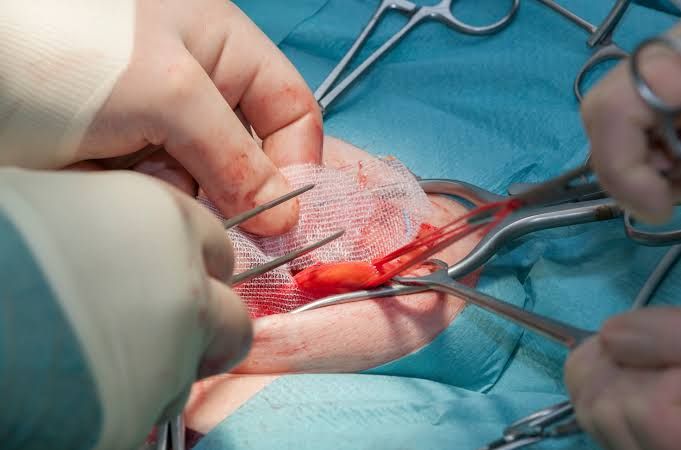
A 45-year-old man presents with a painful swelling in his right groin. The swelling is reducible and becomes more prominent when he coughs. He is diagnosed with an inguinal hernia. Which of the following is the most appropriate surgical approach for this condition?
- (A) Open repair with mesh ✓
- (B) Laparoscopic repair
- (C) Watchful waiting
- (D) Emergency surgery
- (E) Robotic-assisted repair
Inguinal hernias are a common surgical condition, particularly in adult males. The management of an inguinal hernia typically involves surgical intervention, especially when the hernia is symptomatic, as in this case where the patient presents with a painful swelling that is reducible and becomes more prominent with coughing.
Step 1: Understanding the Types of Surgical Repairs
There are several surgical approaches to repair an inguinal hernia:
- Open Repair with Mesh: This traditional method involves making an incision in the groin area to access the hernia sac. The surgeon then pushes the protruding tissue back into place and reinforces the abdominal wall with a mesh patch to prevent recurrence.
- Laparoscopic Repair: This minimally invasive technique uses small incisions and special instruments, including a camera, to repair the hernia. It allows for quicker recovery times and less postoperative pain compared to open surgery.
- Watchful Waiting: This approach may be considered for asymptomatic or minimally symptomatic patients, particularly older adults or those with significant comorbidities. However, given that this patient has a painful swelling, watchful waiting is not appropriate.
- Emergency Surgery: This would be indicated if there were signs of incarceration or strangulation of the hernia, which could lead to bowel obstruction or ischemia. The scenario does not suggest such urgency at this time.
- Robotic-Assisted Repair: Similar to laparoscopic repair but utilizes robotic technology to enhance precision during surgery. It is becoming more popular but may not be necessary for all cases.
Step 2: Evaluating Options Based on Current Guidelines
Current guidelines from reputable surgical associations recommend that symptomatic inguinal hernias should be repaired surgically due to the risk of complications and worsening symptoms over time. Both open repair with mesh and laparoscopic repair are effective methods; however, they have different indications based on patient factors such as age, activity level, and personal preference.
- Open Repair with Mesh (A) is often favored for its simplicity and effectiveness in most cases.
- Laparoscopic Repair (B) offers benefits in terms of recovery time but may not be necessary unless specific conditions warrant it.
- Given that this patient has a reducible inguinal hernia that is causing pain, immediate surgical intervention is warranted rather than watchful waiting or emergency surgery.
Step 3: Conclusion on Most Appropriate Surgical Approach
Considering all factors—symptoms presented by the patient (painful swelling), standard practices in managing inguinal hernias, and current clinical guidelines—the most appropriate surgical approach for this condition would be:
(A) Open repair with mesh
This method provides reliable outcomes and addresses both symptom relief and prevention of recurrence effectively.







